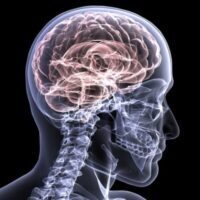Neuropathologic and Clinical Findings in Young Contact Sport Athletes Exposed to Repetitive Head Impacts
McKee AC, Mez J, Abdolmohammadi B, et al. JAMA Neurology. Published online 2023. doi:10.1001/jamaneurol.2023.2907
Full Article Freely Available
Take-Home Message
Less than half of young adults exposed to repetitive head impacts through sports suffering from mental health and cognitive disturbances before death met clinical criteria for a chronic traumatic encephalopathy (CTE) diagnosis. Other factors may contribute to CTE-like symptoms in this group.
Background
The sports community has growing concerns about the long-term consequences of repetitive head impacts (e.g., CTE). CTE may cause cognitive impairment, mental health concerns, and mood disturbances. Very few studies have examined the presence of CTE among a large group of young adults, which could offer insights into CTE among former youth athletes without other age-related brain changes.
Study Goal
The authors aimed to understand the pathologic brain changes and symptoms of former contact sport athletes younger than 30 years at death.
Methods
The authors used donated brains from 152 young individuals (13 to 29 years) with a known history of repetitive head impacts. These brains came from the Understanding Neurologic Injury and Traumatic Encephalopathy (UNITE) Brain Bank. Researchers contacted next-of-kin to complete cognitive and mental health assessments about the donor. A team of four neuropathologists diagnosed CTE or other neurodegenerative diseases using established evaluation criteria.
Results
Overall, based on the 152 brain samples, 41% of donors had CTE. Of these, all but three brains had only mild CTE. Older donors and former American football athletes with a longer history of contact sport participation had a greater chance of CTE. Clinical cognitive and mental health conditions were common among participants, regardless of CTE diagnosis.
Viewpoints
The authors found that ~41% of people under 30 years old with a history of contact sports and cognitive and mental health concerns have CTE. Hence, among individuals under 30 years at death, their cognitive and mental health concerns may be caused by something other than CTE (e.g., life stressors, genetics, and other underlying mental health concerns). It is important to avoid applying these findings to the broader athletic population because most, if not all, of these brains were donated because of perceived pathology before death. Furthermore, this study sample was predominantly male (93%) and White (73%), further limiting interpretation.
Clinical Implications
In practice, this study suggests that CTE may only be one of many causes of cognitive and mental health concerns after exposure to repetitive head impacts through sport. As a result, clinicians should be prepared to support patients with mental health needs and foster timely referral to mental health professionals for further care. We should also educate our patients that not all cognitive and mental health concerns among athletes are attributable to CTE and that it remains unknown how many people have CTE among those with or without a history of sports participation.
Questions for Discussion
What other factors may contribute to CTE-like symptoms in former contact-sport athletes? What experiences do you have with former/current athletes suffering from CTE or CTE-like symptoms?
Related Posts
- Few Definitive CTE Cases Detected With and Without History of Brain Injury and Collision Sports
- Most Military Service Members May Not Need to Worry About CTE
- Treatable Conditions Should be Explored in Former Athletes with CTE-Like Symptoms
Written by Cade Watts
Reviewed by Jeffrey Driban


